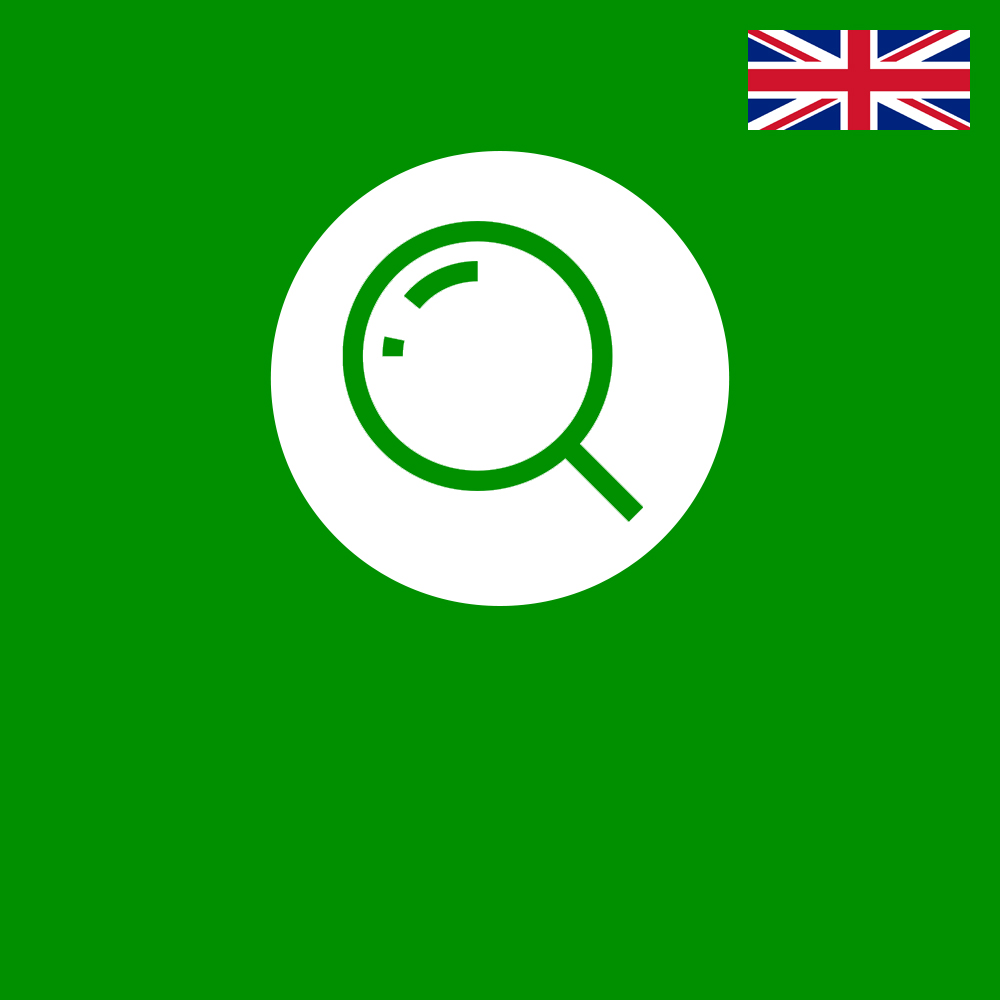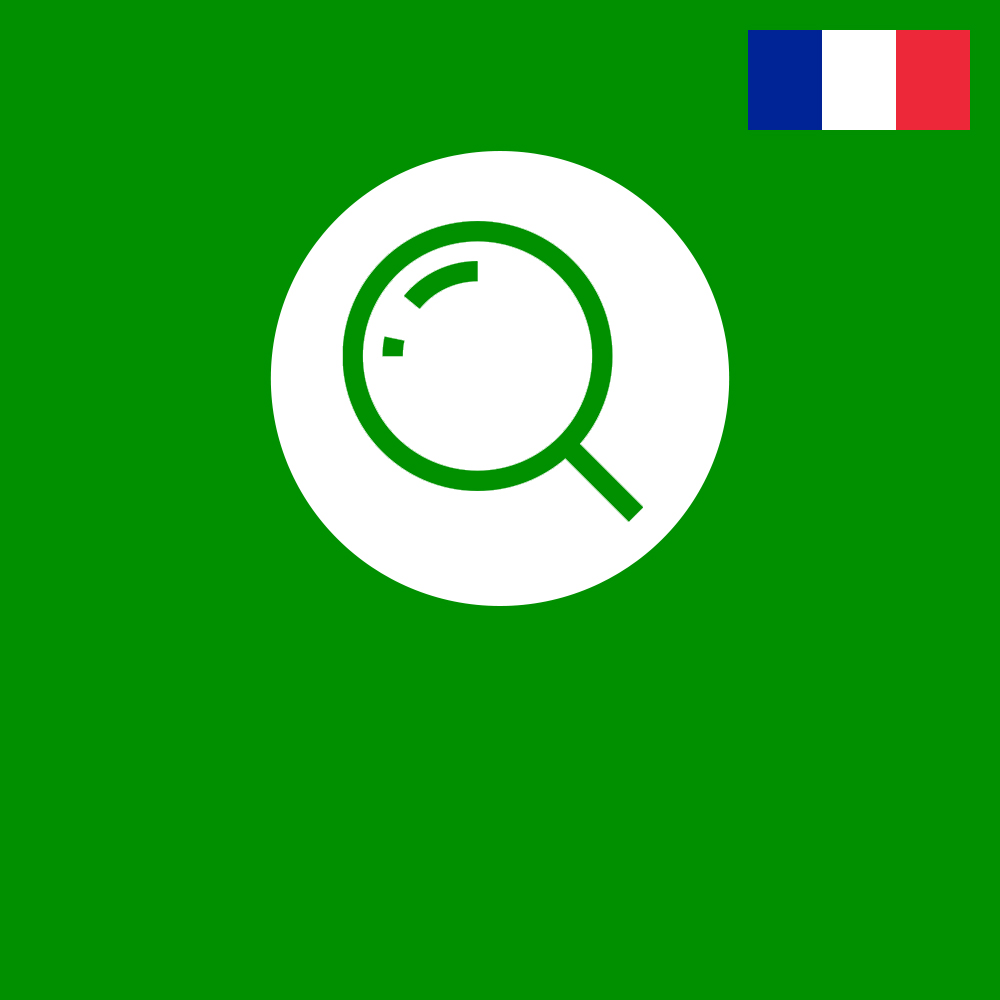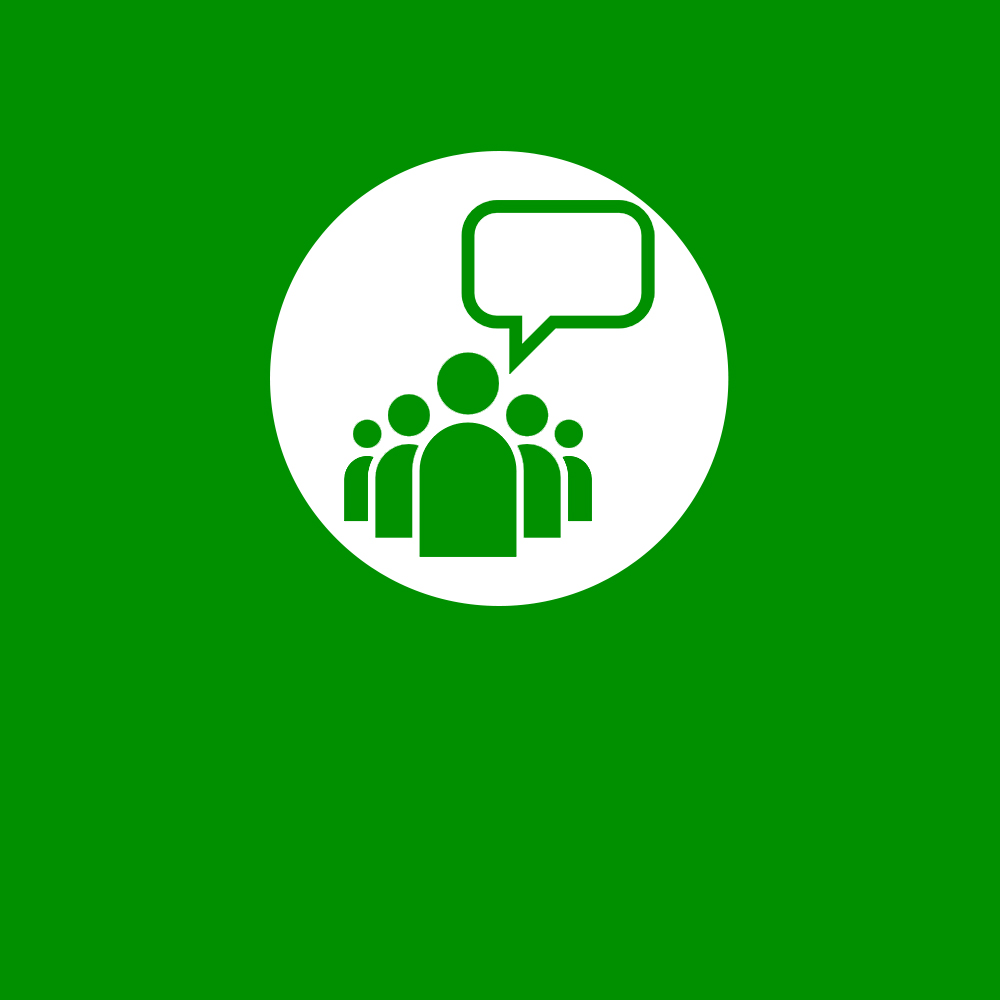Mehrsprachige Angebote im Museum in der Kulturbrauerei
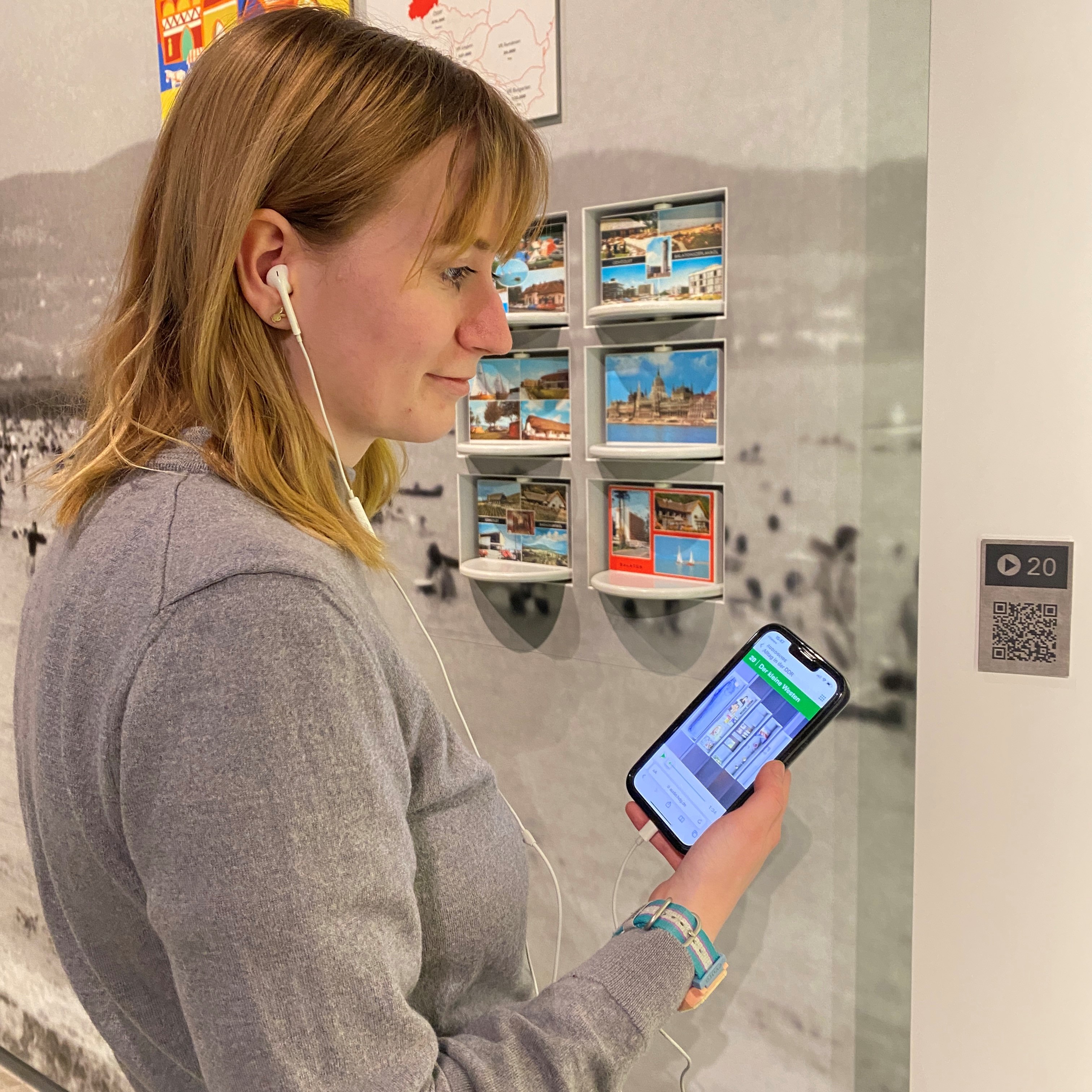
AudioGuide
"Alltag in der DDR"
Wie war der Alltag in der DDR? In 20 Hörbeiträgen berichten Ausstellungsmacher und Zeitzeugen anschaulich vom Leben in der DDR, ihren Erinnerungen an den Alltag und davon, wie das Spannungsverhältnis zwischen Herrschaftsanspruch des SED-Regimes und Lebenswirklichkeit der Menschen in unserer Dauerausstellung „Alltag in der DDR“ umgesetzt wurde.
Den AudioGuide können Sie online auf dem eigenen Smartphone, Tablet und Computer abrufen – zu Hause, unterwegs oder über das kostenfreie WLAN im Museum. Für den Fall, dass Sie kein Smartphone bei Ihrem Museumsbesuch dabeihaben, können Sie sich selbstverständlich auch AudioGuide-Geräte vor Ort ausleihen.
AudioGuide auf Deutsch hier online anhören.
AudioGuide in English here online available.
Le guide audio en français en ligne ici.
La audioguía en español online aquí.
L'audioguida in italiano online qui.
Überblick
Zielgruppe: Alle Zielgruppen
Dauer: 45 min
Themen: SED-Herrschaft, DDR, Freizeit, Konsum und Mangel, Betrieb, Diktatur
kostenfrei
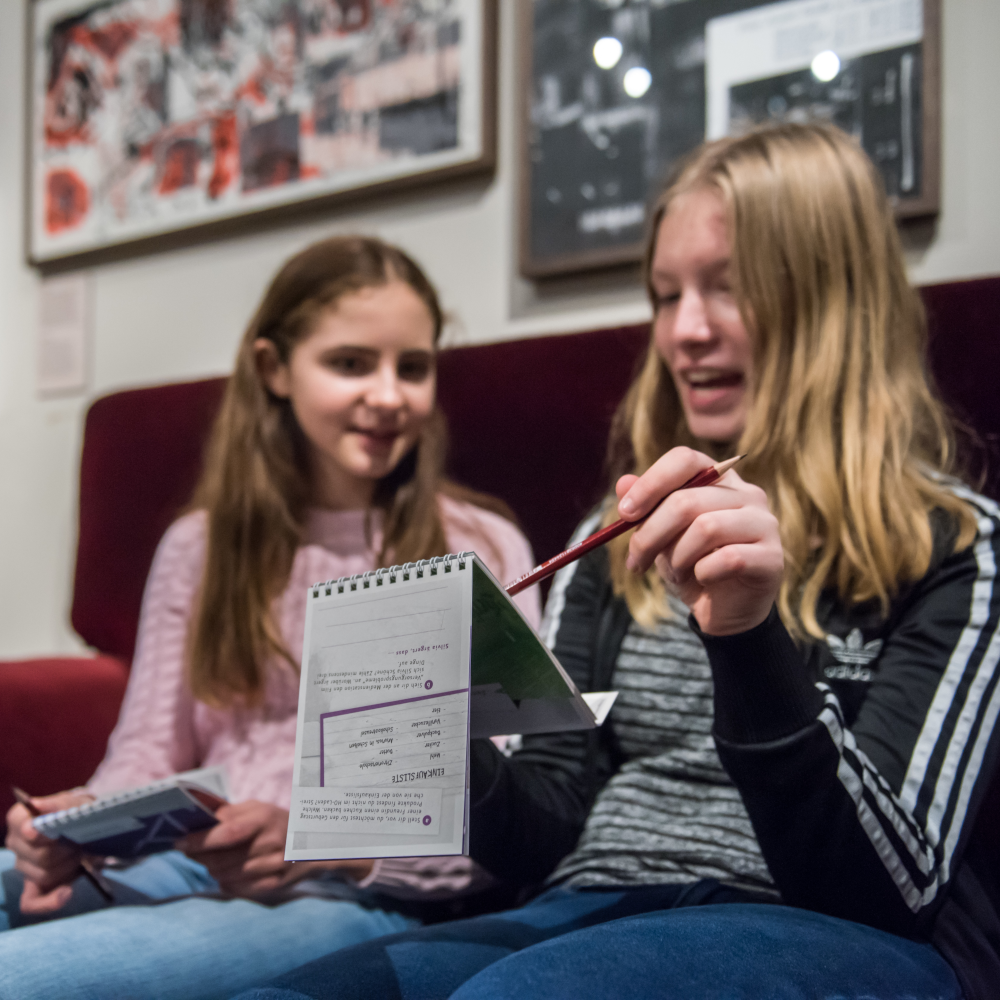
Exploring on one’s own
Tracing History: “What was life like ... in the GDR?”
What did everyday life in the GDR look like? What boundaries did the SED regime draw, and were there people who resisted state control?
By searching for clues, young people get to know the permanent exhibition „Everyday life in the GDR“ on their own: Six stations invite to explore original objects, biographical reports and interactive media stations and to find references to their own lives.
Ask for the Guide “What was life like ... in the GDR?” at the information desk.
Download the Guide “What was life like ... in the GDR?”
At a glance
Target audience: Secondary level I and II
Duration: 1 h
Topics: Everyday life, Socialist Unity Party rule, Leisure, Consumption and Deprivation
Free of charge
Contact
Visitor Services
Phone: +49 (0) 30 467 77 79-11
E-Mail: besucherdienst-berlin(at)hdg.de

Explorez de façon autonome
Sur les traces de l'histoire: « Comment était la vie... en RDA ? »
Comment était la vie quotidienne en RDA ? Quelles limites le régime du SED a-t-il tracées et y avait-il des gens qui ont résisté au contrôle de l'État ? Avec la recherche de traces, les jeunes découvrent l'exposition permanente en toute autonomie: Six stations vous invitent à rechercher des objets originaux, des reportages biographiques et des stations multimédias interactives et à trouver des références à votre propre cadre de vie.
« Comment était la vie... en RDA? » est disponible au bureau d'information.
Telécharger le guide « Comment était la vie... en RDA? »
D’UN COUP D’ŒIL
Groupe cible: élèves de cours moyen 2 à la Seconde
Durée: 1 h
Sujets: Histoire quotidienne, règle SED, temps libre, consommation et pénurie
Gratuite
Contact
Service des visiteurs
Tél. (0 30) 4 67 77 79-11
E-Mail: besucherdienst-berlin(at)hdg.de
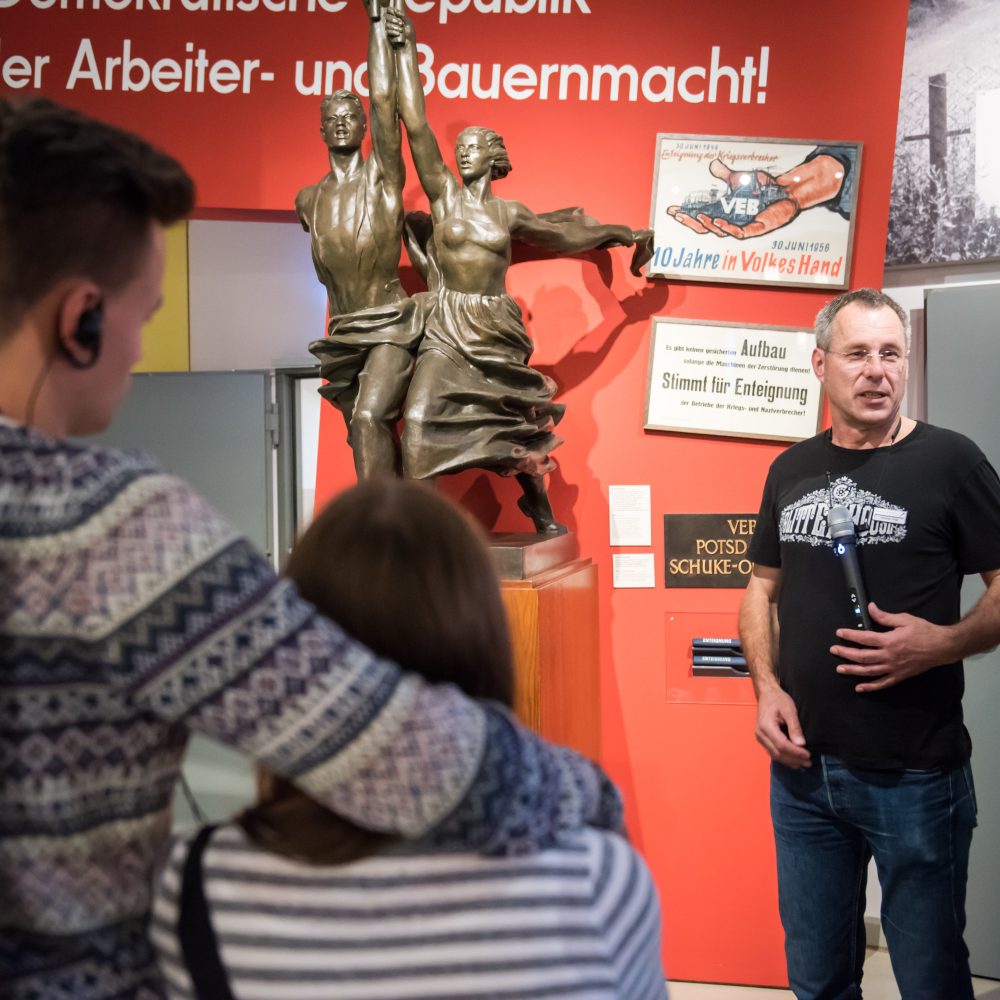
Begleitung
Fremdsprachige Begleitungen
Gerne können Sie eine Begleitung durch unsere Dauerausstellung „Alltag in der DDR" auch in einer Fremdsprache buchen. Wir bieten Begleitungen in englischer, französischer, spanischer, italienischer, niederländischer, polnischer und russischer Sprache sowie in Mandarin und Kantonesisch an. Ihre Sprache ist nicht dabei? Kontaktieren Sie unseren Besucherdienst, damit wir gemeinsam eine geeignete Alternative finden.
Fremdsprachige Begleitungen sind für Gruppen ab 10 Personen kostenfrei über unseren Besucherdienst buchbar.
ÜBERBLICK
Zielgruppe: Alle Zielgruppen
Dauer: 1 h
Themen: Alltagsgeschichte, SED-Herrschaft, Betriebsalltag, Freizeit, Konsum und Mangel, das Kollektiv und der Einzelne
kostenfrei
KONTAKT
Besucherdienst
Tel. (0 30) 4 67 77 79-11
E-Mail: besucherdienst-berlin(at)hdg.de

